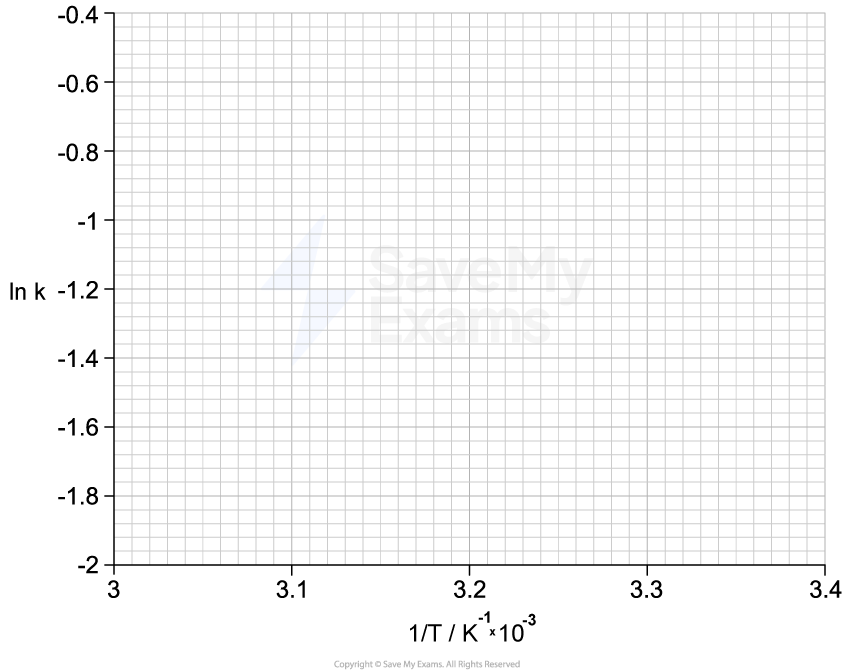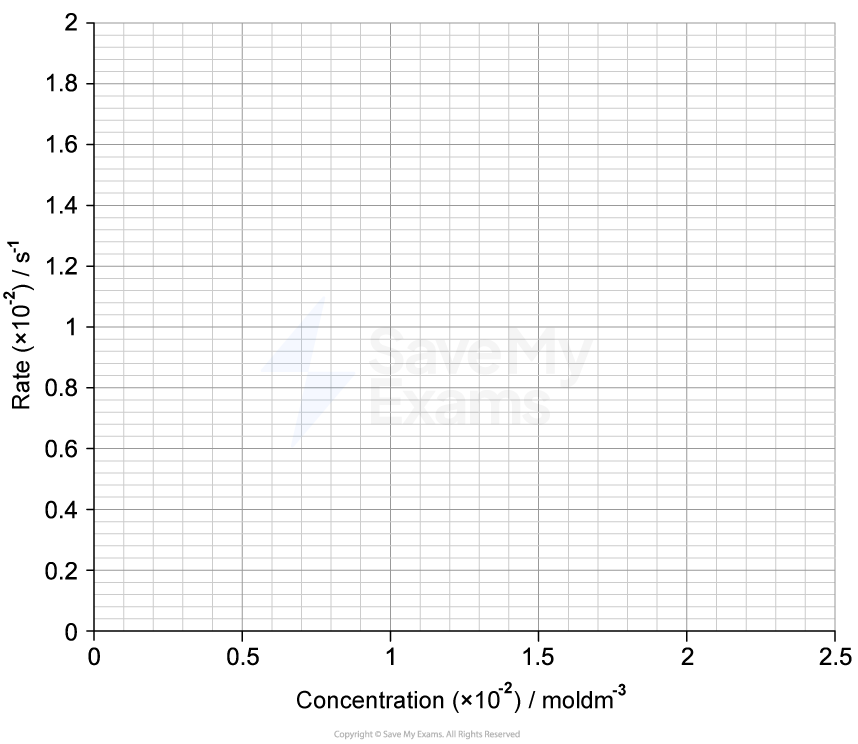Define the term rate of reaction.
Substances A and B react in solution according to the equation.
A + 2B → C + 2D
The rate equation for the formation of C and D from A and B is:
rate = k [B]
The data in Table 1 was obtained in a series of experiments on the rate of the reaction between A and B at a constant temperature.
Table 1
Experiment | Initial concentration of A / mol dm–3 | Initial concentration of B / mol dm–3 | Initial rate / mol dm–3 s–1 |
1 | 0.15 | 0.15 | 3.5 x 10-4 |
2 | 0.30 | 0.15 |
|
3 | 0.30 | 0.30 |
|
i) State the order of reaction with respect to A.
ii) State the initial rate for experiment 2.
iii) The reaction is first order with respect to B. Calculate the initial rate for experiment 3.
iv) State the overall order of the reaction.
Substances E and F react in solution according to the equation.
2E + 2F → 2G + H
Overall, the reaction is second order.
Suggest the three combinations for the orders with respect to E and F.
The data in Table 2 was obtained in a series of experiments on the rate of the reaction between E and F at a constant temperature.
Table 2
Experiment | Initial concentration of E / mol dm–3 | Initial concentration of F / mol dm–3 | Initial rate / mol dm–3 s–1 |
1 | 0.20 | 0.25 | 2.4 x 10-3 |
2 | 0.40 | 0.25 | 2.4 x 10-3 |
3 | 0.40 | 0.50 | 9.6 x 10-3 |
i) Use experiments 1 and 2 to explain the order of reaction with respect to E.
ii) Using experiments 2 and 3, describe the effect of doubling the concentration of F on the initial rate.
iii) Deduce the order of reaction with respect to F.
iv) Write the rate equation for the reaction between E and F.
Did this page help you?











